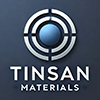Wafers and Substrates
Wafers and substrates serve as the fundamental platforms for the fabrication of modern electronic and photonic devices. These base materials provide the structural and electrical foundation upon which semiconductors, MEMS, LEDs, and optical components are built. With continuous advances in technology, the demand for high-purity, defect-free wafers and substrates with precise dimensional and crystallographic specifications has grown exponentially. Our company is committed to supplying a broad spectrum of wafer and substrate materials that meet the stringent requirements of both research institutions and large-scale commercial manufacturers.

Whether the need is for cutting-edge laser components, next-generation integrated circuits, or advanced RF modules, we offer tailor-made solutions with exceptional quality and performance. Our deep industry knowledge and flexible customization capabilities make us a trusted partner in enabling innovation across multiple high-tech sectors.
Material Portfolio
Tinsan Materials offers an extensive and diversified range of wafer and substrate materials suitable for a variety of applications in microelectronics, optoelectronics, and advanced photonics:
Wafer Specifications
We provide wafers in a wide range of specifications to suit diverse application needs:
Substrate Customization
Tinsan Materials offers a range of customization options to adapt substrates to your specific device or process needs:

Applications
Our wafers and substrates are integral to the following key industries and applications:
Quality & Inspection
Tinsan Materials maintains strict quality control protocols throughout the production and inspection processes:
